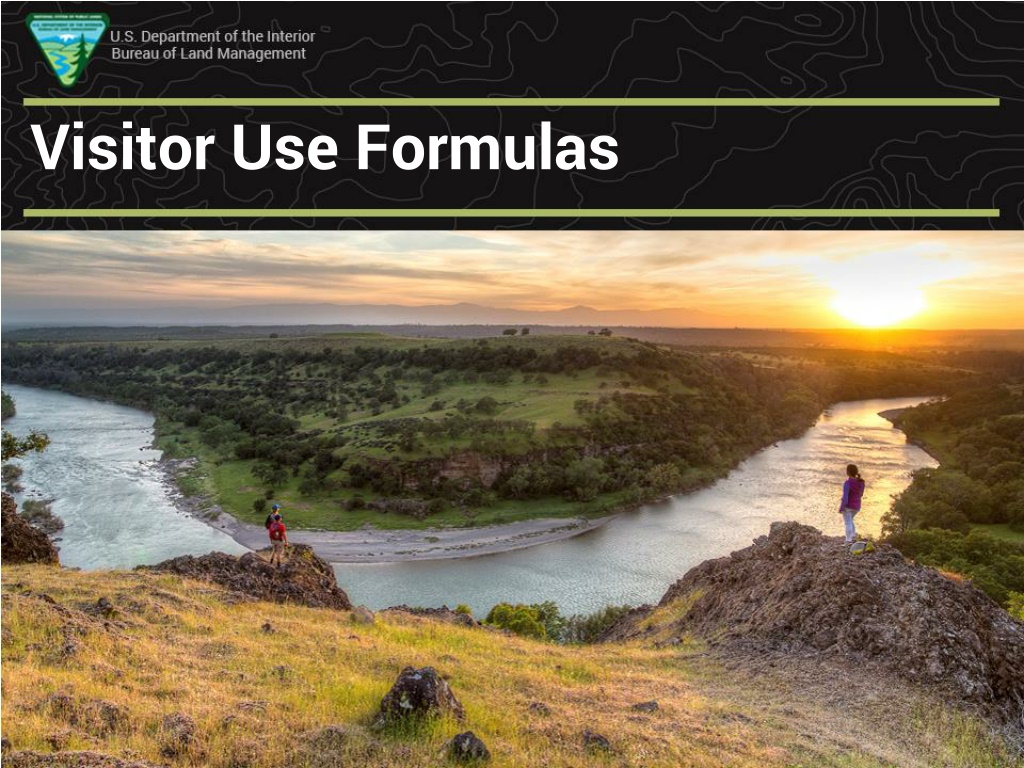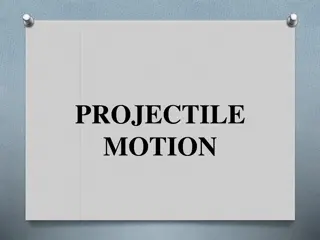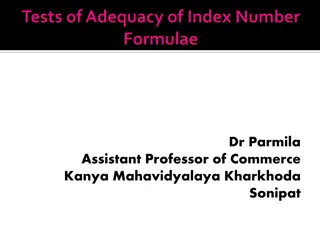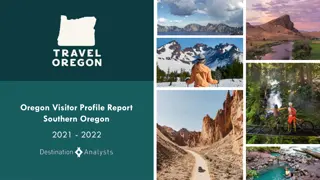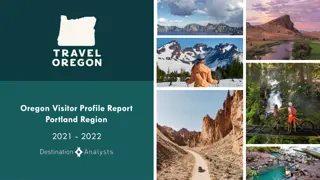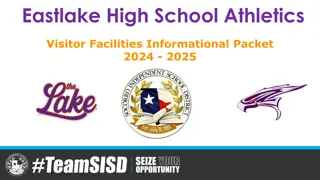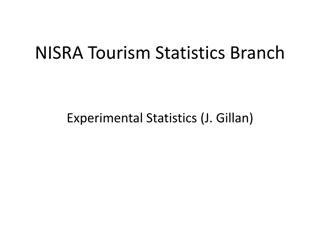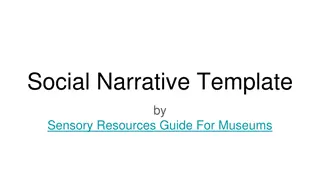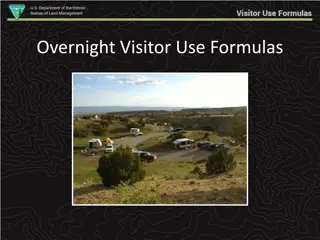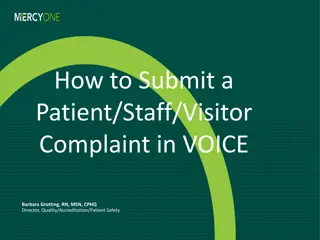Visitor Use Formulas and Information Collection
How to develop and apply visitor use formulas effectively, understand the importance of visitor information collection at recreation sites, and balance supply and demand for recreational resources by knowing visitor demographics and preferences. Explore the need for collecting visitor data, creating user-friendly formulas, and optimizing visitor experiences.
Download Presentation

Please find below an Image/Link to download the presentation.
The content on the website is provided AS IS for your information and personal use only. It may not be sold, licensed, or shared on other websites without obtaining consent from the author.If you encounter any issues during the download, it is possible that the publisher has removed the file from their server.
You are allowed to download the files provided on this website for personal or commercial use, subject to the condition that they are used lawfully. All files are the property of their respective owners.
The content on the website is provided AS IS for your information and personal use only. It may not be sold, licensed, or shared on other websites without obtaining consent from the author.
E N D
Presentation Transcript
Visitor Use Formulas Not as hard as they look ??cos??? + ??sin??? + sin? sin? = 2sin1 2? ? cos1 ? ? = ?0+ 2? ? ? ? ?=1
Visitor Use Formulas Not as hard as they look ??cos??? + ??sin??? + sin? sin? = 2sin1 2? ? cos1 ? ? = ?0+ 2? ? ? ? ?=1 ? ?
Objective Understand and be able to explain: What we should know about the recreating public, Why we collect visitor use information, What information is needed to develop a visitor use formula, How to determine if your formula makes sense, How to create a formula in RMIS, How to view visits added in the RMIS database
Example Given a recreation site description and visitor use data, create and test a visitor use formula that includes; average length of a site visit, activities to be tracked, percent of participation each activity represents during a visit, and average length of time of participation in each activity.
What is important to know about the people recreating at your site?
What is important to know about the people recreating at your site? At a minimum, managers like to know how many people use sites and areas, when they are used, and what activities take place.
What is important to know about the people recreating at your site? Knowing our customers helps balance supply and demand for recreation with other resources, Enables us to meet visitor s expectations. Demand for recreation opportunities is often measured by number of visitors.
Why do we collect visitor information? FLPMA Sec. 201 (a) The Secretary shall prepare and maintain on a continuing basis an inventory of all public lands and their resource and other values (including, but not limited to, outdoor recreation and scenic values).
Why do we collect visitor information? Visitor use is baseline information that allows us to; track trends, link recreation use to resource changes, allocate/prioritize resources, analyze administrative decisions, and allows us to estimate the amount, type, and distribution of visitor use. This information is needed for revisions to management plans and to help make resource decisions.
Where do we collect this information? It all starts with selecting a place to track visitor use. This can be a day use site, a campground, a river corridor, a fairly large area with multiple rec. sites, or an area where people visit but there are no recreation facilities.
Why do we need formulas? It helps tell the story of what visitors are doing on BLM lands without having to know what every visitor is doing.
Visitor Use Formulas Easy as: 1. Activities 2. Average amount of time spent doing each activity 3. Average percent of time visitors participate in each activity
Example Simple Formula Our site is a hiking trail, where the average visit is 30 minutes, and everyone who visits hikes the trail. 1. Activity: Hiking 2. Average time: 0.5 hour (30 minutes) 3. Percent Participation: 100 %
Formula Red Gulch Dinosaur Tracksite Visitors are staying at the Tracksite for an hour (observations) 100% participate in viewing the interpretive exhibits and going to see the dinosaur tracks. That takes them about 45 minutes 30% have snacks or a meal that takes them an hour to enjoy. 15% go geocaching and that takes about 15 minutes to locate and log the cache.
Formula Red Gulch Dinosaur Tracksite Let s build a visitor formula which should: include the main activities that we want or need to track and Should reflect the type and proportion of use that occurs. The total number of visitor hours for the formula should be about the same as the average length of stay.
Formula Red Gulch Dinosaur Tracksite Let s build a visitor formula which should: include the main activities that we want or need to track and Should reflect the type and proportion of use that occurs. The total number of visitor hours for the formula should be about the same as the average length of stay. The total number of visitor hours for the formula should be about the same as the average length of stay.
Formula Red Gulch Dinosaur Tracksite If we add the average time for each activity, we get two hours which is twice as long as the average length of stay. Activity Viewing Picnicking Geocaching Average Hours 0.75 1.00 0.25 Total 2.00
Formula Red Gulch Dinosaur Tracksite But if we look at the visitor hours per user which is the hours (x) times percent participation, we get a total of 65 minutes as our length of stay which is about what we want. Activity Viewing Picnicking Geocaching Average Hours x 0.75 1.00 0.25 Percent = 100% 30% 15% Average Stay 45 minutes 18 minutes 2 minutes Total 65 minutes
Visitor Use Formula Worksheet Site Name: Red Gulch Dinosaur Tracksite Formula Name: Red Gulch Summer Use Average visitor stay: 1 hour Activity Viewing Picnicking Geocaching Average Hours x Percent = 0.75 1.00 0.25 Average Stay 45 minutes 18 minutes 2 minutes 100% 30% 15% Total 65 minutes
Try building a formula in RMIS Our Trailhead has two trails; a hiking trail and a mountain bike trail. Half the users hike and half the users ride mountain bikes. Each user stays an average of one hour.
What does the formula look like? Hiking; average one hour; 50 percent participation. Mountain biking; one hour; 50 percent participation. Visitor Activity Hiking Picnicking Average Hours x Percentage = 1.0 1.0 Average stay 30 minutes 30 minutes 50% 50% Total 60 minutes
Lets Add Some Visits to the Site In RMIS Add 100 visits to the trailhead site.
Summary We know why we need visitor use information We know what a visitor use formula is and what it consist of. We have created a Visitor Use Formula in RMIS, added data, and checked our work.
Conclusion For a given recreation site with visitor use data, you can now create and test a visitor use formula that will includes; average visit stay, activities to be tracked, percent of participation for each selected activity, and average length of time each activity is participated in.
Understanding our Visitors As Outdoor Recreation Planner we need to understand our visitor so that we can make good decisions about what they expect about the activities in which they are participating.
Understanding our Visitors We know people will head to Wyoming and drive 5 miles down a dirt road to visit the spot where dinosaurs walked on a beach 163 million years ago.
